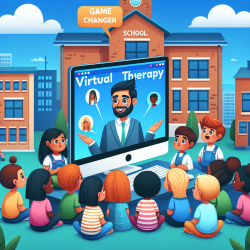Introduction
In the ever-evolving landscape of educational support, virtual therapy has emerged as a beacon of hope for mental health professionals working in schools. The integration of telepractice into speech therapy evaluations and other therapeutic services is not just a trend; it's a transformation. For mental health professionals who are passionate about creating significant outcomes for children, understanding the power of virtual therapy is crucial.
The Rise of Virtual Therapy in Schools
Virtual therapy, or telepractice, has revolutionized the way we deliver mental health services in educational settings. With the advent of technology, therapy sessions that once required in-person visits can now be conducted online, offering a plethora of benefits:
- Accessibility: Children in remote or underserved areas can now access high-quality therapy without the barriers of travel or limited local resources.
- Flexibility: Virtual sessions can be scheduled around the school day, reducing disruptions to a child's education.
- Consistency: Regular sessions can be maintained more easily, supporting better therapeutic outcomes.
Data-Driven Success
Research supports the effectiveness of virtual therapy, showing comparable outcomes to traditional in-person sessions. Data indicates that telepractice can effectively support speech therapy evaluations and interventions, leading to improvements in communication skills, social interactions, and academic performance.
For instance, a recent study found that children who participated in online speech therapy showed significant progress in their speech and language skills. This evidence-based approach ensures that interventions are not only convenient but also effective.
Engaging Parents and Educators
One of the critical components of successful therapy is the involvement of parents and educators. Virtual therapy platforms often include features that facilitate communication and collaboration among therapists, parents, and teachers. This collaborative approach ensures that everyone involved in a child's development is on the same page, fostering a supportive environment that extends beyond the therapy session.
Taking the Next Step
For mental health professionals in schools, the integration of virtual therapy is an opportunity to enhance the services provided to students. If you're considering implementing telepractice in your school, here are a few steps to get started:
- Research and select a reliable virtual therapy platform that meets your school's needs.
- Train staff and educate parents on the benefits and logistics of virtual therapy.
- Monitor and evaluate the effectiveness of virtual sessions to ensure they meet the desired outcomes.
Conclusion
Virtual therapy is not just a temporary solution; it's a long-term strategy for improving mental health services in schools. By embracing telepractice, mental health professionals can provide accessible, flexible, and effective support to children, ultimately helping them reach their full potential. It's time to take the next step and explore how virtual therapy can transform your school's mental health services.










